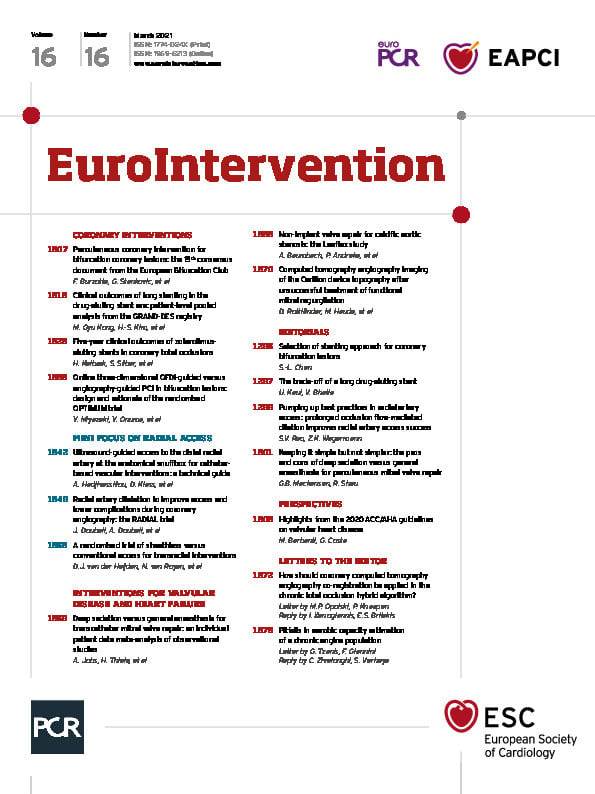
We read with interest the letter by Georgios Tzanis et al1 concerning our study “Coronary sinus Reducer implantation results in improved oxygen kinetics at cardiopulmonary exercise test in patients with refractory angina”2.
In brief, in our manuscript we presented, for the first time, data regarding cardiopulmonary exercise testing before and after Reducer implantation. Improvements in oxygen kinetics were shown by increased VO2 max (+11.3%, p=0.026), increased VO2 at anaerobic threshold (+9.1%, p=0.06), and increased effort tolerance of approximately 34% (68±28 W vs 81±49 W, p=0.05). These observations were associated with consistent improvements in Canadian Cardiovascular Society class.
As the authors of the letter stated, our results are in line with previous evidence of reduction in myocardial ischaemia following Reducer implantation3, including an investigation by the same group who described improved parameters of cardiac magnetic resonance imaging. Of key importance, our study design and endpoints – including cardiopulmonary exercise test (CPET) parameters – were similar to a previous investigation by Adachi et al4 reporting comparable results after percutaneous coronary intervention in patients with stable angina (e.g., VO2 max +14%). Furthermore, in the limitations paragraph of our manuscript we also stated that “relative new parameters of oxygen kinetics were not available in our analysis”, such as O2-pulse, O2-pulse flattening duration and ΔVO2/ΔWR slope.
We firmly believe that our results demonstrated for the first time that clinical improvements in patients with refractory angina treated with the Reducer can be translated into a better peak oxygen consumption. This parameter should be considered in studies investigating the possible reduction in myocardial ischaemia after Reducer implantation, unlike the studies cited by Tzanis et al.
While appreciating the dedication and interest of the authors in raising such considerations, we see little scientific value.
Conflict of interest statement
S. Verheye is a consultant for Neovasc Inc. C. Zivelonghi has no conflicts of interest to declare.
Supplementary data
To read the full content of this article, please download the PDF.

